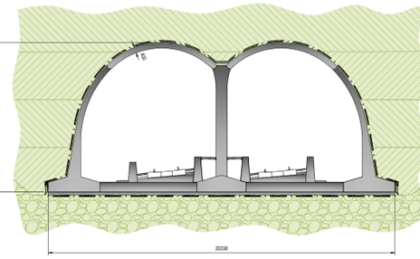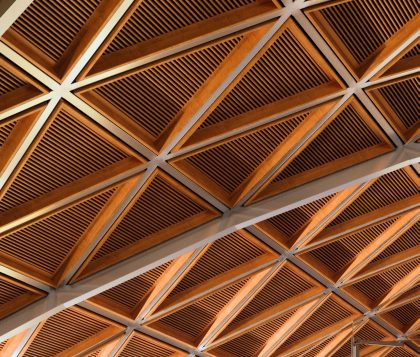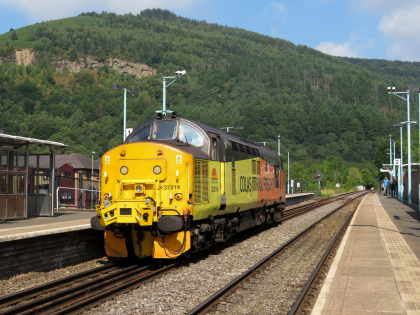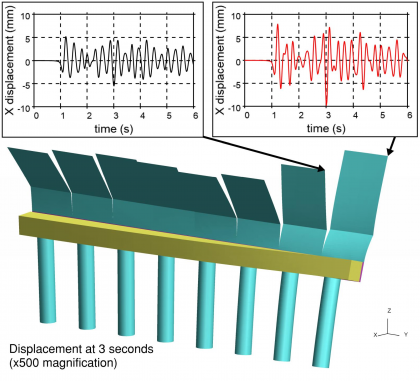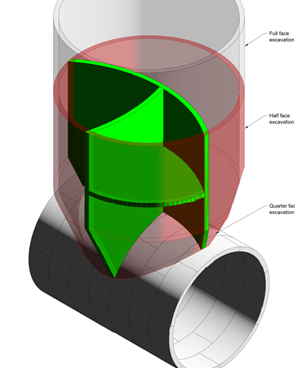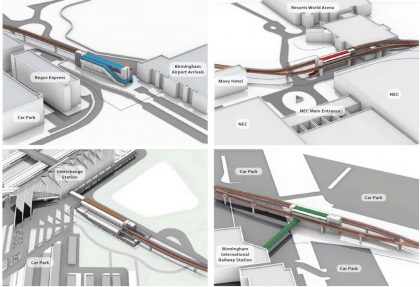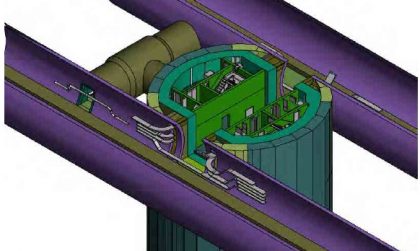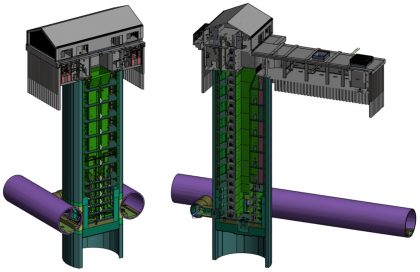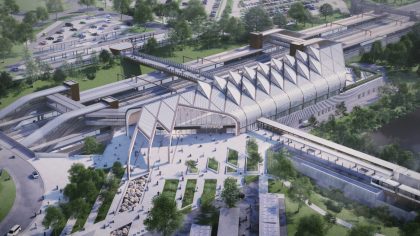Structural
Design, construction and maintenance of built structures
Structural Resources
Resources include papers, videos, research summaries and good practice documents produced by authors from across the HS2 Family to capture learning, good practice and innovation from the HS2 programme
-
Published on
High Speed Rail 2 ( HS2) G2S green tunnels fire design assessment review
This paper presents the design methodology adopted to evaluate the response of a pre-cast reinforced concrete cut-and-cover tunnel subjected to an accidental fire load. The design methodology adopted a simplified fire assessment with an advanced thermal-mechanical numerical analysis completed in parallel. The advanced numerical analysis adopts a transient semi-coupled thermal-mechanical numerical analysis with temperature dependant…
-
Published on
Birmingham Curzon Street Station: A 21st Century Station Roof
Birmingham Curzon Street Station is the planned new northern terminus for Phase One of High Speed Two (HS2), located in the city centre of Birmingham. The Curzon Street Station roof is defined by its efficiency, simplicity and elegance, measuring 280m long by 80m wide and with a clear span of 70m metres over the station’s…
-
Published on
Using Train-Borne Lidar to improve design confidence in railway electrification
The Midland Main Line needs to be remodelled and electrified to accommodate High Speed Two (HS2) train services to Sheffield. This paper addresses how the issue of site surveys, to accurately judge the level of intervention required for the system design, without site access, was solved. Detailed measurements were required on the 26km route, which…
-
Published on
Special segment design for cross passages and shaft passages
Operational considerations for the High Speed Two (HS2) TBM twin tunnels require cross passage connections and ventilation openings that are critical for not only the safe operation but also for the construction process. Conventionally, temporary support is used to ensure the stability of these openings in the tunnel lining. The use of special segments reduces…
-
Published on
The slowest part of HS2 – The design of HS2 automated people mover
The HS2 Automated People Mover (APM) provides the link between the new Interchange Station and existing local infrastructure of the NEC, Birmingham International Railway Station and Birmingham Airport. The system therefore provides a key piece of the connectivity of HS2 to the region. Located on an elevated viaduct, the APM is also unique amongst the…
-
Published on
Design of Chiltern Tunnel South Portal
The tunnel portal structures to each end of the Chiltern Tunnel are the first example of high-speed rail porous portal structures in the UK. Porous portals exist in other countries (e.g. Japan and France) but not to the scale of those required for the Chiltern Tunnels. The primary purpose of the porous portals is to…
-
Published on
Design of Chiltern Tunnel and ventilation shaft interfaces
The Chiltern Tunnel will be the longest tunnel on Phase One of High Speed Two (HS2). As part of the safety systems it is necessary to be able to provide forced ventilation for smoke control as well as intervention access for emergency services. As a result, five shafts are required along the alignment of the…
-
Published on
Design optimisation and challenges with the deepest shaft on HS2
This paper describes the design development of the deepest ventilation shaft along the C1 alignment - Chalfont St Peter Ventilation Shaft. The developed design solution was a 17.8m internal diameter, 65m deep shaft constructed within Chalk strata using 1200mm thick, 78m deep diaphragm walls. The Tunnel Boring Machines (TBMs) forming the twin running tunnels are…
-
Published on
HS2 Interchange Station: An exemplar project for integrating safe by design principles
HS2 has set strategic goals in health and safety to create a railway designed, built and operated to world class standards creating a legacy of new and better standards in health and safety[1]. This paper details how the design of HS2 Interchange Station is a prime example of how Safe by Design principles[2] can be…


